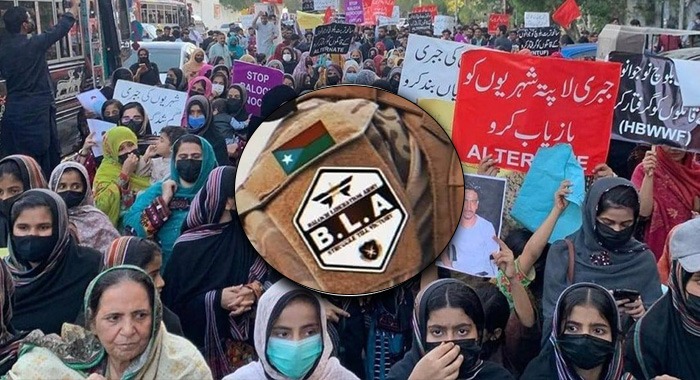A silent war is unfolding in Balochistan one not fought merely with bullets and bombs, but with narratives, symbols, and screens. At the heart of this new battleground lies a deeply troubling phenomenon: the systematic exploitation of Baloch women as pawns in the propaganda of Fitna al-Hindustan. Disguised as defenders of human rights and resistance, a small but amplified cohort of voices often paraded before the international media has become the soft face of a hard war. Their grievances, real or imagined, are repackaged to serve the strategic objectives of India-backed subversion. But this is not grassroots activism it is a manufactured front in a psychological war, where women are manipulated into becoming vessels for chaos, not change.
In a cruel twist, these women are presented globally as champions of justice, even as they remain deafeningly silent when Baloch teachers are executed, when Levies officers are assassinated, or when female health workers are shot in the line of duty. Their silence is not accidental. It is part of a selective outrage designed to shield the crimes of Fitna al-Hindustan while vilifying the very state that offers them the constitutional right to protest.
This is no longer about dissent. It is about duplicity.
Evidence drawn from confessional statements, intercepted communications, and documented financial trails has consistently pointed toward a structured campaign by Indian intelligence to exploit the imagery of oppressed women for international sympathy. These narratives are then fed into global platforms, where moral nuance is often lost and anti-Pakistan sentiment finds an eager audience.
But where is the outrage for the 80-plus Baloch families whose sons died wearing the khaki uniform of Pakistan? Where is the solidarity with the mothers of slain Baloch constables who stood their ground in Turbat, Gwadar, and Kech? Why are their names never raised at UN side events or echoed by human rights lobbies?
Because their stories don’t serve Fitna al-Hindustan’s script.
Worse still, many of the women who are radicalised into this machinery are unaware of the ideological war they have been pulled into. They are promised dignity and liberation, only to be used as shields for anti-state agendas. When they fall, they are no longer treated as exploited or manipulated they are celebrated as martyrs of rebellion by the very architects of their downfall.
Let us be clear: this isn’t empowerment it is erasure. The voices of countless loyal Baloch women—those who nurse the wounded, raise the orphaned, and bury the martyred—are drowned beneath the noise of those who offer cover to Fitna al-Hindustan. These women deserve the microphone, not those who provide soft language for hard violence.
Pakistan has shown more patience than any state ought to. We have opened the door to dialogue, to reintegration, to healing. But enough is enough. Every individual has the right to return—but only once. After that, the law must speak clearly, finally, and unapologetically.
Those who preach human rights must understand: sovereignty is a right, not a privilege. States have the right to defend themselves—not just militarily, but morally, politically, and narratively. If the world wishes to see peace in Balochistan, it must begin by dismantling the echo chambers of Fitna al-Hindustan, and by asking difficult questions of those who romanticise rebellion but ignore its victims.
We will not apologise for surviving.
Balochistan deserves real peace, not performative outrage. And peace will only come when the veil is lifted, the proxies are exposed, and the faces of exploited women are no longer used to shield the face of organised subversion.





